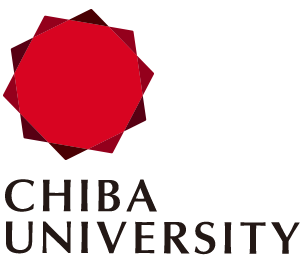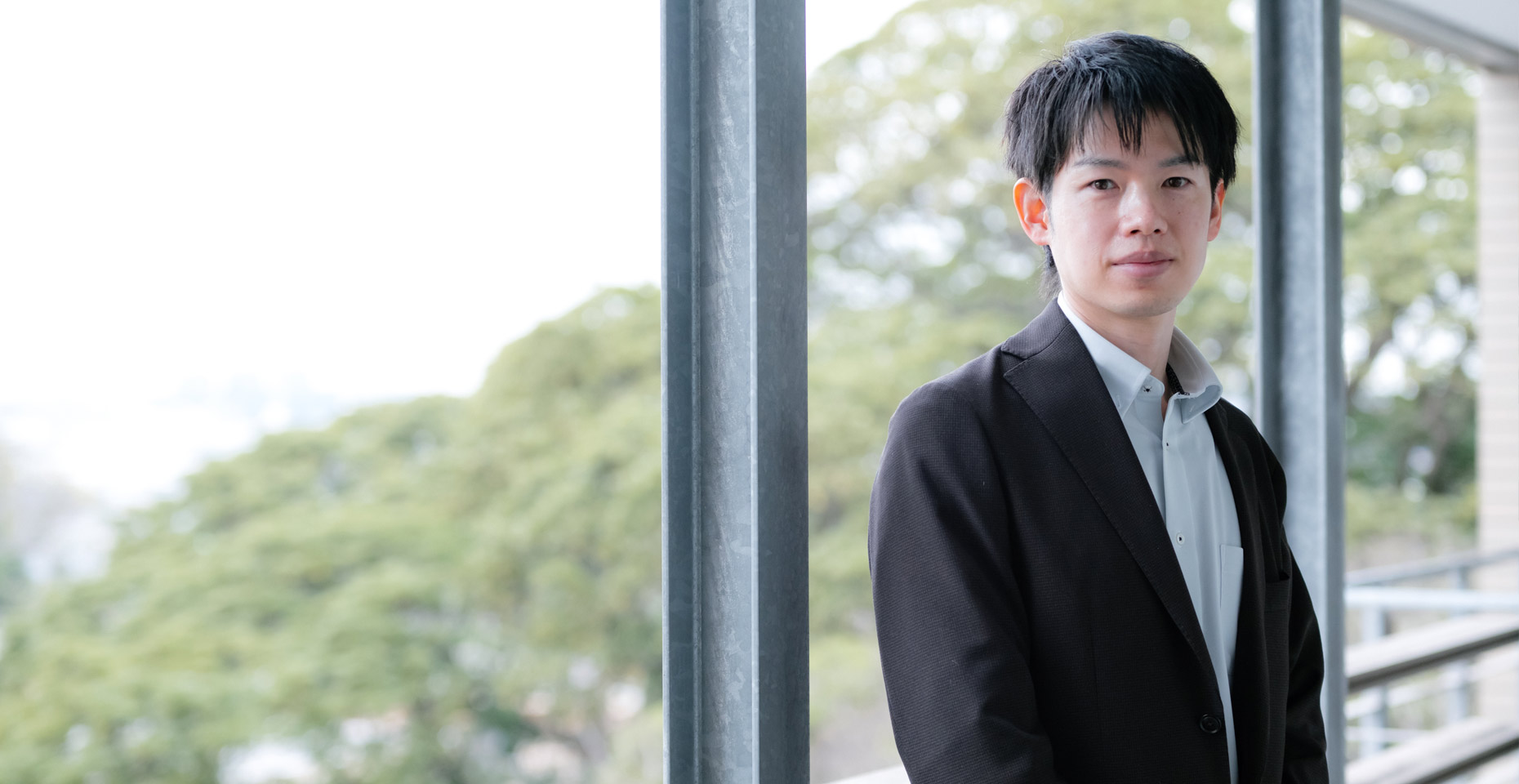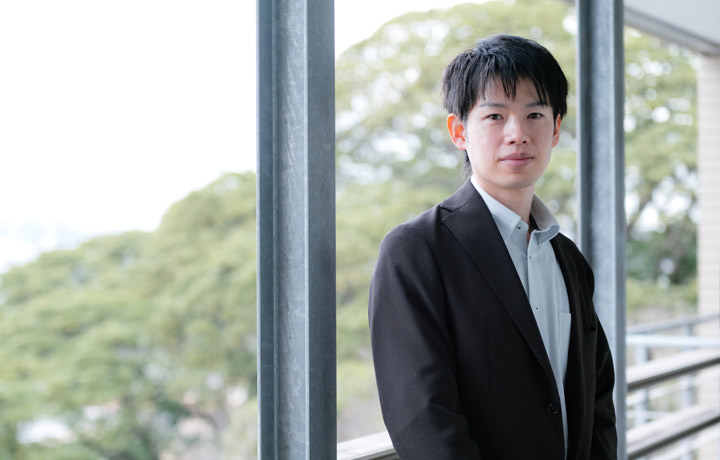Captivated by the extraordinary reactivity of carbenes—highly activated carbon species that exhibit remarkable chemical activity—Associate Professor Shingo Harada of the Graduate School of Pharmaceutical Sciences is working to develop new methods of controlling them. By utilizing the unique properties of carbenes in combination with metal catalysts, he can rapidly synthesize complex molecules, paving the way for innovation in pharmaceutical development and industry. His research philosophy centers on thinking deeply, transforming adversity into strength, and continually embracing new challenges. We spoke with him about his career journey and his vision for the future.
Becoming a Researcher in Pursuit of Thinking

The human body is made up of atoms like carbon, bound together in intricate ways. Yet even at the atomic level, I can’t truly explain where consciousness or the sense of self originates. I was captivated by this mystery, and that fascination drew me to chemistry.
As an undergraduate, I chose to join an organic chemistry lab, focusing on carbon—the element most abundant in the human body. I was inspired by how my professor approached questions with such careful thought, and I began to aspire to become a researcher myself. What I enjoy most about organic chemistry labs is the balance between the ‘wet’ side—hands-on experiments—and the ‘dry’ side—computer simulations and analysis.

A new chapter in my career and research at Chiba University
Just before I began my post at Chiba University, my professor advised me, “Don’t pursue research related to what you did as a student. Do something completely different.” The first two years were really challenging, but thanks to the persistent efforts of the students who worked alongside me and the support of professors and associate professors around me, my research gradually began to bear fruit. After six or seven years, I had established a solid foundation for my work. Establishing my own originality at a young age and taking on entirely new challenges was an invaluable experience.
Taming ‘extremely reactive’ carbenes to spark innovation
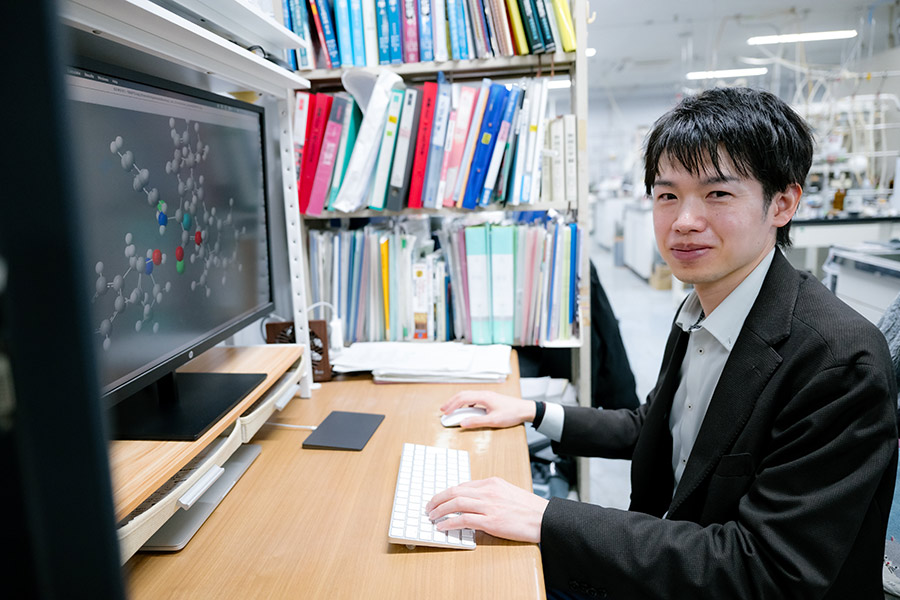
Taking on one of the most challenging research targets: the ‘extremely reactive’ chemical species known as Carbenes
Carbene chemistry is a niche field—so specialized that it usually gets no more than a page or two in most undergraduate organic chemistry textbooks.
My own journey began when a student in the lab happened to produce an unexpected product in a carbene reaction experiment. I thought, “I don’t really get what’s going on, but this looks fascinating.” I couldn’t resist diving in—and one thing led to another. Before I knew it, I had been studying carbenes for over a decade.

Typically, carbon has four ‘hands (electrons)’, but carbenes have only two. This shortage makes them highly unstable—they will react with almost anything just to reach a stable four-hand state.
Consequently, carbenes are extremely challenging to handle, truly the ‘wild horses’ of the carbon world. Yet their ability to engage even with partners once considered unreactive gives the potential to transform the field of organic synthesis.
Selective synthesis: the classic but effective route to control reactions
A catalyst tames the highly reactive carbene and directs it toward the intended reaction. Metals are commonly used for carbene reactions, but each metal has distinct properties. Even with modern organic chemistry knowledge, it is still difficult to predict exactly which metal will catalyze which reaction.
Rhodium (Rh) has been the main catalyst used. However, after testing various metals in our laboratory, we discovered that using silver (Ag)—which is cheaper than rhodium—can produce entirely different products from the same starting materials.
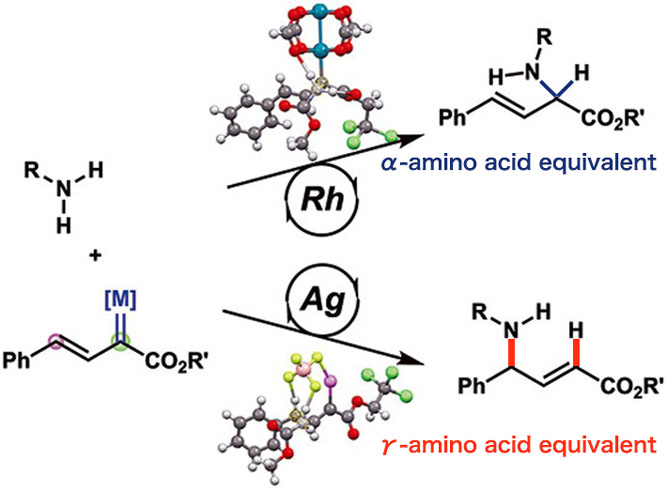
While exploring new reaction pathways, we also succeeded in synthesizing small molecules with rare structures. Some of these molecules have the potential to become new drugs, and currently, they can be efficiently produced only using the method developed by our team. This approach could open up exciting possibilities for future drug development.
His motto is “Never let hardship cloud your mind. “
With the spirit of a survivor and sharp thinking, he faces every challenge.
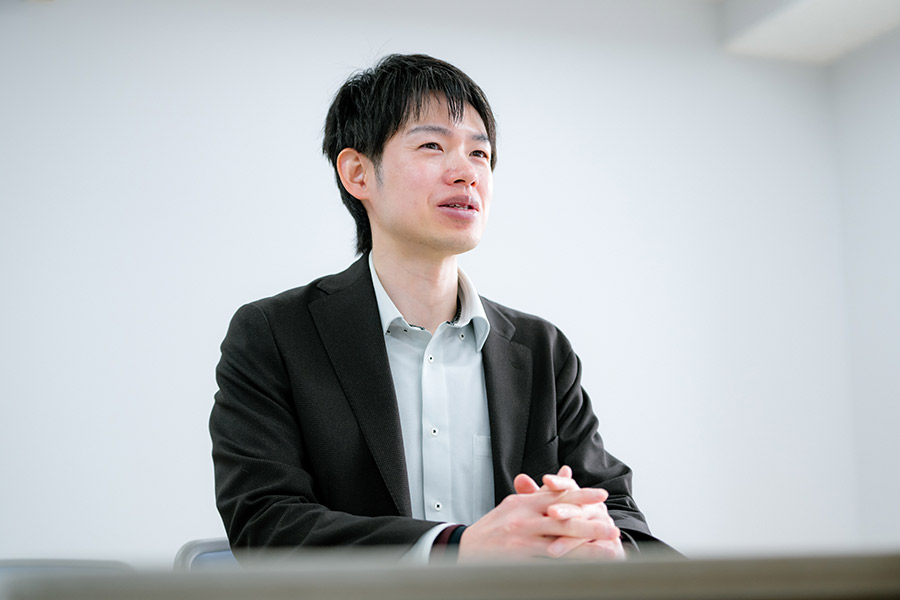

With numerous high-quality publications and having received several honors, including the Pharmaceutical Society of Japan Award for Young Scientists, he was also selected for the Chiba University Award for Distinguished Researcher in 2024. How, then, does he approach his research?
I’m a very hands-on, gritty type of researcher who likes to tackle challenging environments. If I could come up with a hypothesis, someone would probably have already tried it. However, there must be a reason why no one has reported success yet. I keep thinking deeper and pushing myself to reach levels that others have not yet achieved.
Organic chemistry experiments require expensive reagents and consumables and take time, but many researchers have limited resources. I therefore considered introducing quantum chemistry calculations to overcome these constraints. With a computer and the right computational techniques, I can keep running costs low and make effective use of my time—even at night. Because I can perform high-level DFT calculations* and theoretical analysis,other researchers sometimes ask me to calculate transition states and other properties, which further strengthens my abilities as a researcher.
*Density Functional Theory (DFT): An electronic state calculation method that allows us to predict the physical and chemical properties of molecules, such as electron density and energy.
With a 1-year-old and a 3-year-old at home, the hardest part is simply finding time to study.
I divide my day into morning, noon, and night, and work while trying to maintain my concentration. I’m not the type of person who can concentrate for long periods, so I try to make the most of the time I have. In the evening, I go home, give my children a bath and a meal, and then return to the lab. I think it’s nice to be able to have dinner together as a family. Research is important, of course, but when I think about the rest of my life, I feel it would be more enjoyable if it weren’t only about research. Sometimes, while playing with my children, I come up with ideas that are different from my usual thoughts—perhaps because I’m more relaxed.
Recently, academic conferences have started to offer childcare services, and I hope that someday I’ll be able to bring my children to a conference. For now, I am grateful to be able to use the university’s diversity promotion subsidy system when I need to attend conferences or other events.
Continuously learning new technologies and fostering innovation
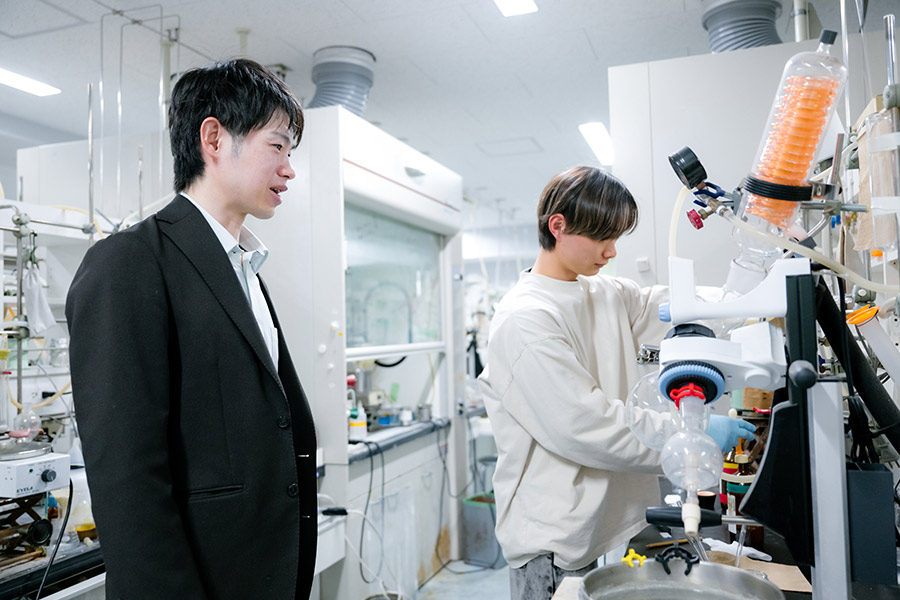
Amazed by the talent of students at Coming to Chiba University’s Graduate School of Pharmaceutical Sciences
There are many creative students in my current lab who study independently, and even when something unexpected happens, they investigate it and solve it by themselves. I really appreciate that attitude. They also have a positive influence on their juniors, and I feel it’s becoming part of the lab’s culture.
When it comes to mentoring, I try to put students first while maintaining a reasonable distance. As much as possible, I support them in gaining a wide range of knowledge and skills through research that will help them in their future career. For those who want to become researchers, I think it’s a good idea to change specialties at an early stage and broaden their expertise.
A two-month study abroad for skill development
I have studied abroad twice so far. The first time was at Bielefeld University in Germany, where I learned about enzyme technology. While gaining experience in handling enzymes, I also traveled alone to neighboring countries such as Belgium, the Netherlands, and France in between experiments.
The second time was at Yale University in the United States, where I sought out a lab led by an early-career principal investigator. There, I built valuable connections with researchers specializing in the fusion of computational and synthetic technologies.


When you hear the word ‘study abroad,’ many people may think of a stay lasting more than a year. It is true that a certain amount of time is necessary to gain experience living abroad. However, I followed the advice of my former mentor, Professor Takasu, who told me during my student days, “Research at a host lab ultimately belongs to it. It is also important to return to your home country and focus on your own research.” Based on his advice, I chose to study abroad for a short period of time to acquire specific skills. Shorter periods allow for more flexibility in terms of time and costs. I personally felt that studying abroad for three separate four-month periods was more effective for acquiring skills than studying a year abroad at once.
I have found that the same principle can apply to domestic study programs as well. For example, in 2024, I participated in the MANABIYA program at the Hokkaido University Institute for Chemical Reaction Design and Discovery (ICReDD), where I studied cutting-edge computational science under Professor Satoshi Maeda. I hope to continue learning new technologies throughout my career, no matter how old I get.
How might carbenes be applied in the future?
In the chemical industry, faster reaction rates and fewer synthesis steps can significantly reduce manufacturing costs, which has a major impact. Even if a compound is a promising drug candidate, it may be discarded simply because it takes too long to manufacture. Issues that are minor on a lab scale become major issues when scaling up to plant-level mass production operations.
Carbenes have the potential to transform industrial processes. Imagine a future in which carbene reactions are widely applied in drug discovery, material development, and beyond. With this vision in mind, I continue to explore and conduct research today.
● ● Off Topic ● ●
I heard you have some hobbies.
I used to be a boxer at university. Before matches, I would lose weight and wear headgear. Nowadays, I’m more cautious about potential brain damage, so I play basketball and do strength training instead.
It sounds like staying in shape has a positive effect on your research life.
I think so! Physical fitness is really important for organic synthesis research, which often requires long hours in the lab. I have been at Chiba University for over ten years, and the professors I work with all seem to have great stamina. I can’t recall any of them ever taking time off due to poor health.
Recommend
-

Designing Mobility: A Gentle Force in Linking People and Society
2024.02.26
-
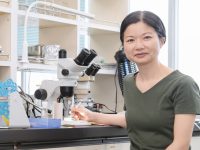
CUTICULA: A Secret of Unique Body Shape of Insects −Exploring the Sophisticated Mechanism Behind their Elongated and Round Bodies
2023.12.11
-
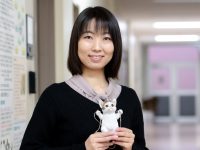
Unraveling the Mysteries of the Feline Mind: Insights from Animal Psychology
2023.05.01
